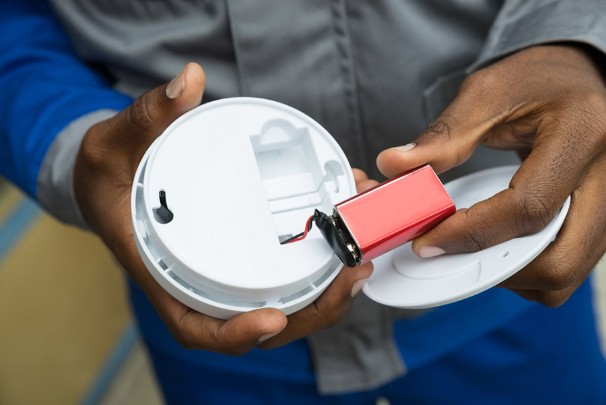According to the CDC, there are about 20,000 emergency room visits for carbon monoxide poisoning in the United States every year. Carbon monoxide is very dangerous and nearly impossible for a human to detect, so how can you protect yourself? Learn what precautions to take to keep your family safe and what to do if you suspect carbon monoxide poisoning.
What Is carbon monoxide?
Carbon monoxide, or CO, is an odorless, invisible gas. When oxygen in the atmosphere is scarce, machinery and fires use carbon dioxide for fuel instead. Carbon monoxide is a byproduct of this process. For example, if you light a fire in your fireplace and debris in the chimney prevents fresh air's circulation, new oxygen can't get in and carbon dioxide can't leave, creating carbon monoxide. Common sources of carbon monoxide include car exhaust accumulating in a closed garage, improperly ventilated natural or gas fireplaces, and gas leaks from broken home appliances.
When inhaled, carbon monoxide enters the bloodstream and replaces the oxygen in it. Organs like your brain and heart need oxygen to function, and when they receive this under-oxygenated blood, they can't work properly. When these organs don't have access to oxygen for extended periods of time, there may be permanent damage.
Preventative measures
Since carbon monoxide is undetectable to the human body, protect yourself and your family by installing carbon monoxide detectors in your home. Ensure they're in proper working order and change their batteries twice a year. A helpful way to ensure you do this: check your detector whenever you change your clocks around daylight saving time. If all of your clocks adjust to time changes automatically, set alarms in a calendar app that will alert you on those days. Replace your detectors every five years and make sure to install a sensor in your bedroom, so you'll hear it if it goes off at night.
To reduce the risk of carbon monoxide build-up, have a professional service your water heater and heating system annually. Never burn wood, charcoal or any other organic material inside without proper ventilation. If you need to use a generator in your house, place it as close to an open window as possible, making sure it is always no more than 20 feet from a ventilation source.
Symptoms of carbon monoxide poisoning
Knowing the signs can help you identify carbon monoxide poisoning and take action. Common symptoms include:
First aid for people exposed to carbon monoxide
Carbon monoxide poisoning is an emergency! If you suspect someone is incapacitated due to carbon monoxide poisoning, move them to an open area with fresh air. However, only do so if you can safely carry the affected person without exposing yourself to carbon monoxide for an extended period of time. Once you are in a safe area, call 911 and check if the person is breathing. If they aren't breathing, perform CPR until medical personnel arrives.
Don't hesitate to seek emergency medical care if you suspect someone has experienced carbon monoxide poisoning. Minutes matter! Know where to go in an emergency by finding your nearest St. Luke's Health emergency room location today.
Sources:
CDC | Carbon Monoxide Poisoning FAQs
OSHA | Carbon Monoxide Poisoning Fact Sheet
Carbon Monoxide Kills | Carbon Monoxide Poisoning




